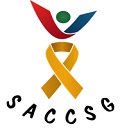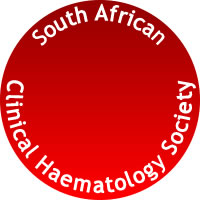Original Research
T-cell lymphoblastic leukaemia: The Johannesburg state-sector experience
Submitted: 02 March 2022 | Published: 22 June 2022
About the author(s)
Jenifer Vaughan, Department of Molecular Medicine and Haematology, Faculty of Health Sciences, University of the Witwatersrand, Johannesburg, South Africa; and, Department of Molecular Medicine and Haematology, Chris Hani Baragwanath Academic Hospital, National Health Laboratory Services, Johannesburg, South AfricaTracey Wiggill, Department of Molecular Medicine and Haematology, Faculty of Health Sciences, University of the Witwatersrand, Johannesburg, South Africa; and, Department of Molecular Medicine and Haematology, Charlotte Maxeke Johannesburg Academic Hospital, National Health Laboratory Services, Johannesburg, South Africa
Pascale Willem, Department of Molecular Medicine and Haematology, Faculty of Health Sciences, University of the Witwatersrand, Johannesburg, South Africa; and, Department of Molecular Medicine and Haematology, Charlotte Maxeke Johannesburg Academic Hospital, National Health Laboratory Services, Johannesburg, South Africa
Katherine Hodkinson, Department of Molecular Medicine and Haematology, Faculty of Health Sciences, University of the Witwatersrand, Johannesburg, South Africa; and, Department of Molecular Medicine and Haematology, Chris Hani Baragwanath Academic Hospital, National Health Laboratory Services, Johannesburg, South Africa
Abstract
Background: T-cell lymphoblastic leukaemia (T-ALL) is a malignancy of immature T-cells which is reported to comprise 7% – 23% of cases of lymphoblastic leukaemia (ALL), making up a larger proportion of adult ALL than childhood cases. It is characterised by an increased risk for early relapse but reportedly has superior outcomes as compared to B-cell ALL amongst adult patients. The frequency and clinical behaviour of T-ALL in Africa are unknown.
Aim: This study aimed to assess the prevalence and selected clinicopathological features of T-ALL in Johannesburg, South Africa (SA).
Setting: The Johannesburg state sector.
Methods: All cases of ALL diagnosed by flow cytometry in the state-sector hospitals of Johannesburg over 42 months between 2016 and 2019 were identified and pertinent data recorded from the laboratory information system.
Results: One hundred and eighty-one cases of ALL were identified, of which 59 (32.6%) were of T-cell lineage. The proportion of adult and paediatric ALL made up by T-ALL was similar (19/54 [35.2%] vs 40/127 [31.5%] respectively). Crude survival rates were very poor, with 80.0% having demised at the time of data collection. The mortality rate was overall significantly poorer amongst patients with T-ALL (80.0%) as compared to those with B-ALL (53.8%; p = 0.005) but was similarly poor in adults with B-ALL (83.3%) vs T-ALL (86.7%) (p = 0.53). The mortality rate did not differ between those with low-risk versus high-risk clinical features (77.8% vs 80.6%; p = 1.00).
Conclusion: T-cell lymphoblastic leukaemia makes up a larger proportion of ALL in Johannesburg than is reported elsewhere, and it is a high-risk disease that is not well stratified by conventional risk factors.
Keywords
Metrics
Total abstract views: 1590Total article views: 2221



